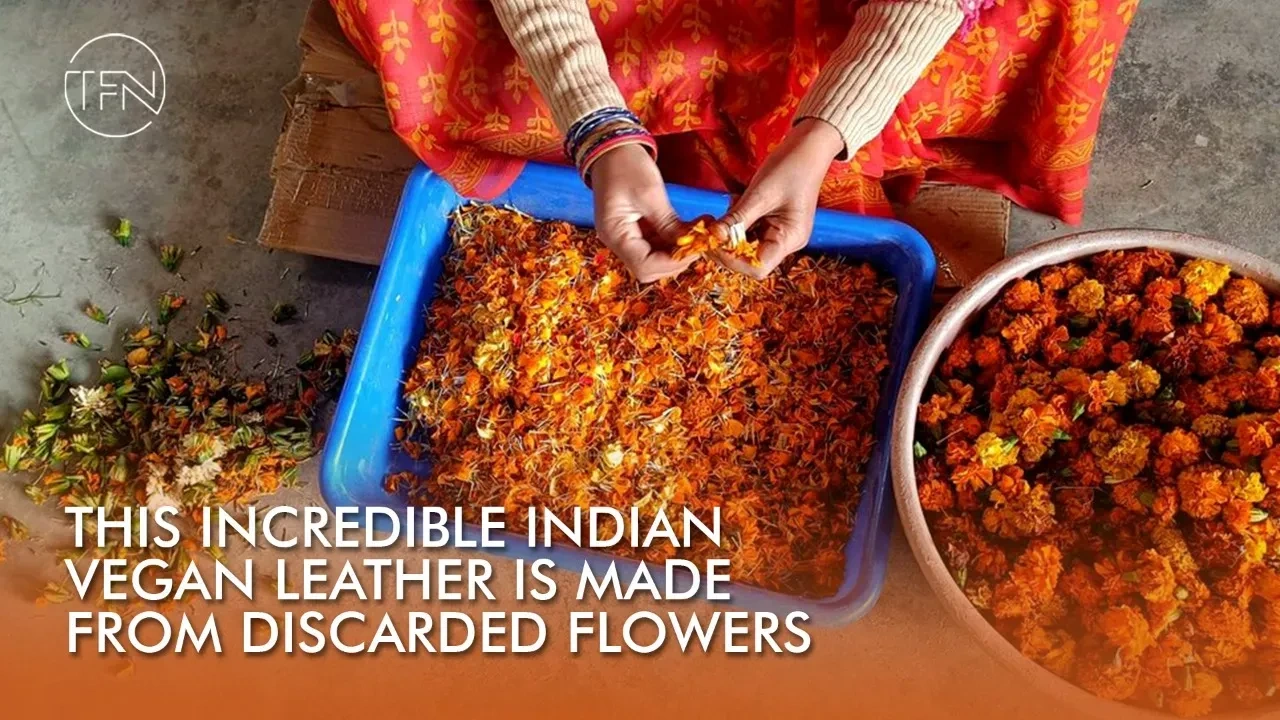
In Kanpur, India, a little mound of what seems to be the sourdough starter is being created in a sterile facility. A bioreactor, a cylindrical cylinder made of gleaming metal, is located in the lab next door. This is comparable to what you may discover in an antibiotic manufacturing lab.
A brand-new material being created as a sustainable replacement for animal leather is called Fleather.
Its trip starts in unexpected places, with flowers, and is delicate and silky to the touch, like soft lamb skin leather.
Fleather, produced by a Kanpur-based startup company named Phool, is a part of a new trend of businesses making plant- and fungi-based leather substitutes that hope to upend the established leather industry and profit from rising "vegan" fashion demand.
There are various environmental risks associated with animal leather production.
The tanning and chemical treatment of animal skin to manufacture leather uses a lot of energy and water, and it also releases poisonous heavy metals that may contaminate water sources.
Activists for animal rights oppose leather as well, noting the cruel treatment of animals in slaughterhouses.
However, Phool's moonshot product, feather, is created by recycling the flower waste produced in temples throughout India.
The startup's journey started on a chilly winter morning in 2015, when Ankit Agarwal and a buddy traveled to Kanpur, Agarwal's birthplace, to take in the busy Ganges bank for some sightseeing.
These flowers are employed in Hindu ceremonies and are revered as holy objects, thus they cannot be discarded with regular trash.
However, sometimes throwing them in a river is part of the ceremony, so as a consequence, flowers are dropped into waterways every day, where they ultimately decompose into mulch that contaminates the water and leaks out dangerous pesticide chemicals.
Agarwal was upset by the sight, which led him to go on a journey to address the particularly Indian issue of temple flower waste, which he refers to as "the lowest hanging fruit" among pollutants.
The garbage from Kanpur's temples was collected by Phool trucks every morning before being deposited into the river.
Workers at the Phool factory removed the petals and placed them in a drying area.
The chief of research and development at Phool, Nachiket Kuntla, and other researchers at the firm became aware of a white coating on a mound of discarded flowers on the manufacturing floor on a humid day in 2018.
According to Kuntla, it seemed like some kind of fungal bacterium was attempting to grow on the blooms by obtaining nutrients from the cellulose in them.
Researchers from Phool became curious and began testing.
They obtained microorganisms from the nearby forest and fed the excrement from flowers to several microbial strains, adjusting the temperature and humidity to see how they would develop in a lab setting.
The researchers started feeding the bacteria in liquid form by boiling the flower petals in water to separate the cellulose and lignin from them and adding some more carbohydrates. This helped the microorganisms pull nutrients more effectively and develop better.
Aamen Talukdar, an associate research scientist at Phool, adds that "[the bacterium] feeds on it, and it develops."
It generates molecules that resemble those found in leather.
This marked the start of Fleather, which Phool started creating in 2021.
The team starts with modest quantities of the microorganisms in flasks in an incubator and eventually grows them bigger by feeding them the nutrient-rich floral juice to create the stuff today.
The mixture is placed onto trays to encourage the fiber growth to adopt the shape of a continuous sheet after the freely flowing liquid transforms into a thick slurry, signifying that the microbe has reached maturity.
A smooth, supple sheet that feels very similar to animal skin leather emerges as the finished product.
According to Kuntla, the material now falls short for goods like belts that call for sturdier leather.
He notes that the tensile strength of leather varies from 8 to 25 megapascals, whereas Fleather has been testing at around 6 to 10 megapascals.

